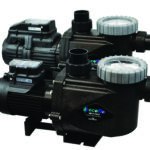The Ultimate Guide to Pool and Spa Maintenance
The Ultimate Guide to Pool and Spa Maintenance
Maintaining a pool or spa is crucial for ensuring its longevity and cleanliness. Not only does it help to preserve the appearance of your investment, but it also helps to protect your health and safety. In this guide, we’ll cover everything you need to know about pool and spa maintenance, including best practices, tips, and tricks for keeping your pool or spa in top condition.
Understanding Pool and Spa Chemistry
One of the most important aspects of pool and spa maintenance is understanding the chemistry behind it. A balanced chemical composition of your pool or spa water is crucial for preventing algae growth, scaling, and other water-related problems. The three most important chemicals to monitor are pH, total alkalinity, and chlorine levels.
pH Levels
The pH level measures the acidity or alkalinity of your pool or spa water. It’s important to keep your pH levels between 7.2 and 7.8, as levels outside of this range can cause skin irritation and damage to your pool or spa equipment.
Total Alkalinity
Total alkalinity refers to the total amount of alkaline substances in your pool or spa water. It’s important to keep the total alkalinity level between 80 and 120 parts per million (ppm), as this helps to stabilize the pH levels and prevent scaling.
Chlorine Levels
Chlorine is a powerful sanitizer that helps to keep your pool or spa water clean and safe. The ideal chlorine level for a pool or spa is between 1 and 3 parts per million (ppm).
Regular Cleaning and Maintenance
In addition to monitoring the chemical composition of your pool or spa water, it’s important to regularly clean and maintain it. Some of the key maintenance tasks include skimming the surface, brushing the walls and floor, vacuuming the floor, and cleaning the filters.
Skimming the Surface
Using a skimmer basket, you should remove any debris from the surface of your pool or spa regularly. This helps to prevent debris from settling on the bottom and potentially causing damage.
Brushing the Walls and Floor
Brushing the walls and floor of your pool or spa helps to prevent algae growth and removes any buildup of dirt and debris. Be sure to use a brush that’s specifically designed for your type of pool or spa.
Vacuuming the Floor
Vacuuming the floor of your pool or spa helps to remove any dirt and debris that may have settled on the bottom. A pool vacuum can be used for this task.
Cleaning the Filters
Your pool or spa’s filters play a crucial role in keeping the water clean and clear. It’s important to regularly clean or replace your filters to ensure they’re functioning properly.
Best Practices for Pool and Spa Maintenance
By following these best practices, you can help to extend the lifespan of your pool or spa and ensure that it remains clean and safe for years to come.
Use a Pool Cover
Using a pool cover is one of the best ways to protect your pool or spa from debris, dirt, and other contaminants. A pool cover also helps to reduce evaporation and maintain a consistent temperature.
Regularly Test the Water
Regularly testing the water in your pool or spa is crucial for maintaining a balanced chemical composition. A pool test kit can be used for this task.
Hire a Professional
If you’re not confident in your ability to properly maintain your pool or spa, consider hiring a professional. A professional pool or spa maintenance service can help to ensure that your pool remains in the best condition at all times.














